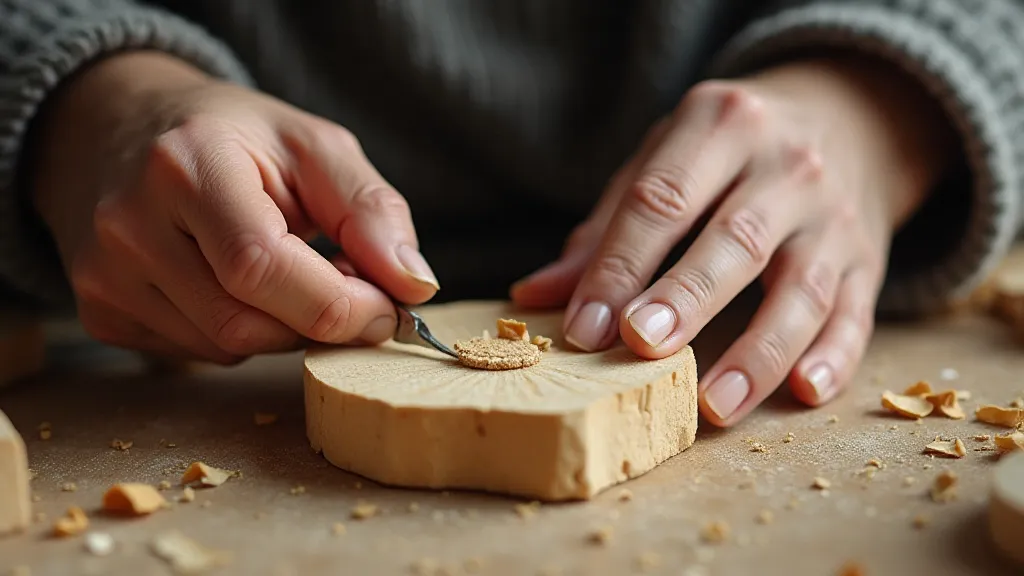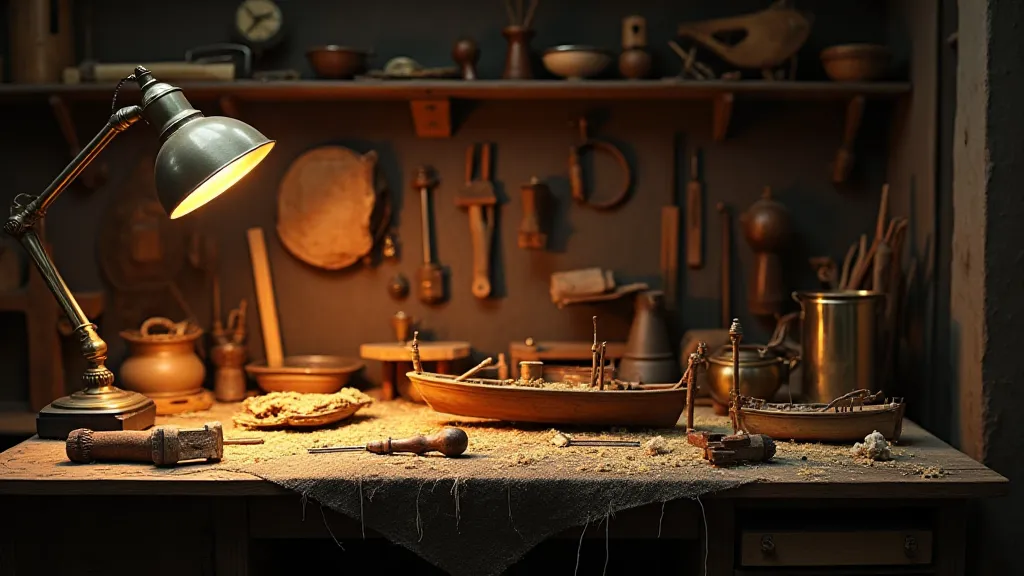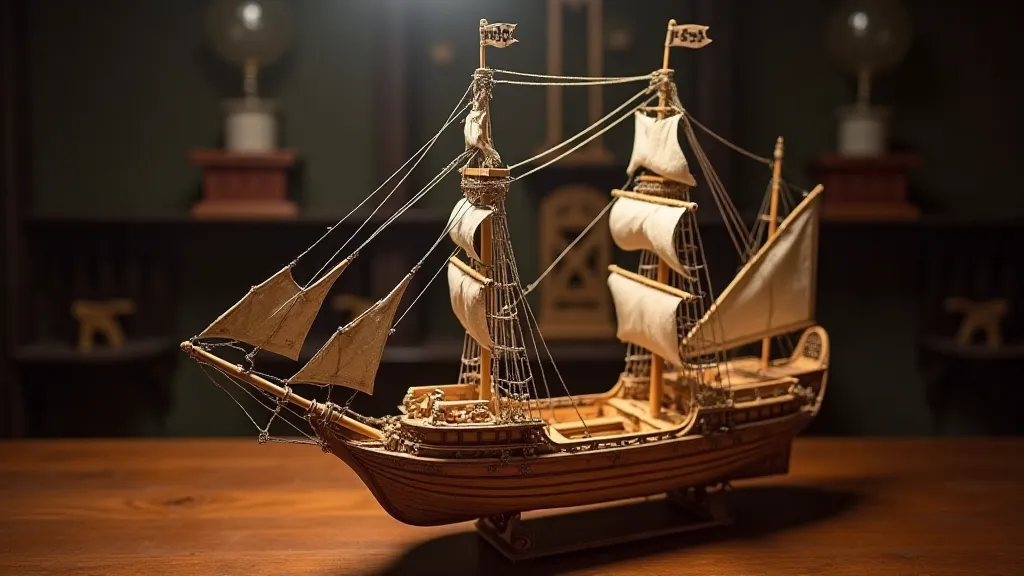The Sea's Silent Counsel: Lessons Learned from the Waves
There's a profound quietude that settles when you’re hunched over a work surface, meticulously shaping a piece of basswood, knowing that it will eventually become a part of a miniature replica of a ship that once braved real storms. It’s a quiet unlike any other – a sanctuary built of precision, patience, and a deep reverence for history. Building model ships, particularly with wooden construction, is more than a craft; it's a conversation with the past, a meditation on perseverance, and a surprisingly apt reflection of life’s own unpredictable tides.
My introduction to this craft wasn’t born of a desire for historical accuracy or an inherent love of maritime lore. It began with a melancholic restlessness, a feeling of needing to create something tangible in a world increasingly dominated by the ephemeral. My grandfather, a taciturn man who rarely spoke of his own past, gifted me a partially completed HMS Victory. He simply said, "Learn patience, lad. The sea teaches that." Little did I know then the depth of his wisdom.

The Dance of Timber and Time
The beauty of wooden model ship building lies in its inherent connection to the raw materials. Unlike plastic kits, wood demands respect. It warps, it splits, it rebels against your intentions if you force it. Each piece of timber – the hull planking, the deck beams, the masts – possesses its own unique grain, its own vulnerabilities. It teaches you to read the wood, to understand its nature before you attempt to shape it to your will. This, in itself, is a powerful lesson. Life, like a stubborn piece of basswood, rarely yields to brute force; it requires understanding, adaptation, and a degree of grace.
Historically, shipbuilding was a cornerstone of global trade and exploration. Vessels like the Cutty Sark, the Santa Maria, and the Kon-Tiki represented not just technological prowess but also the spirit of human ambition and the willingness to confront the unknown. Consider the sheer ingenuity required to construct these vessels – the intricate calculations, the mastery of sail design, the understanding of hydrodynamics. Building a wooden model isn't just about recreating a physical object; it’s about connecting with that spirit of innovation and courage.
More Than Just Craftsmanship: The Art of Anticipation
The process itself is a masterclass in anticipation. You’re not just reacting to what the wood presents; you’re planning ahead. Each plank needs to be precisely cut and fitted, not just for the immediate section but for how it will interact with the pieces that follow. There’s a constant interplay between intention and adaptation. Sometimes, a knot in the wood dictates a change in plan; sometimes, a miscalculation forces you to rework a section entirely. These setbacks, frustrating as they may be, are invaluable teachers.
I remember once, early in my endeavors, I was building the hull of a Dutch fluyt. I’m proud to say that I had meticulously planned out the placement of the planks, ensuring a smooth and symmetrical curve. However, halfway through, a major split appeared in one of the planks – a fault I hadn’t noticed earlier. It felt like a personal failure, a crushing blow to my progress. It would have been easy to discard the piece and start over, but something – perhaps a sense of stubbornness, or a nascent respect for the inherent integrity of the wood – compelled me to find a solution. I painstakingly repaired the split, reinforcing it with carefully placed grain and epoxy. The resulting hull wasn’t perfect, but it was *mine*. It bore the mark of the challenge, and the satisfaction of overcoming it was far greater than any ideal perfection could have offered.

The Silent Lessons of the Sea
The sea, of course, is an apt metaphor for life. It's unpredictable, often beautiful, sometimes terrifying. It demands respect and humility. The challenges inherent in wooden model ship building – the finicky wood, the intricate details, the inevitable setbacks – mirror the trials we face in our own lives. The patience required, the meticulous attention to detail, the ability to adapt to unforeseen circumstances – these are all qualities that serve us well, both in the workshop and beyond.
Collecting antique wooden model ships, or even acquiring original plans, offers a different kind of insight. Examining the construction techniques used by master shipbuilders of the past – the intricate rigging, the meticulous carving, the thoughtful design – provides a profound appreciation for the skill and artistry involved. Many early models were created not just as toys, but as demonstrations of a shipwright's expertise, or as cherished heirlooms passed down through generations. The history embedded within these objects transcends their mere physical form.
Restoration, when approached with reverence and respect, can be a deeply rewarding experience. It's about more than just returning a model to its original appearance; it’s about preserving a piece of history, honoring the craftsmanship of the original builder, and sharing that legacy with future generations. However, it requires a deep understanding of the materials and techniques involved – a commitment to research and a willingness to learn from the past.
A Quiet Reflection
The world moves at an increasingly frenetic pace, demanding constant attention and immediate gratification. Building wooden model ships offers a refuge from that chaos – a chance to slow down, to focus on a single task, and to appreciate the simple beauty of creation. It's a quiet conversation with the past, a testament to human ingenuity, and a profound meditation on the enduring power of perseverance. Like the sea itself, the craft demands respect, rewards patience, and ultimately, offers a glimpse into the deeper currents of life.






